This was published 4 years ago
The 10 best native wildlife experiences you can have in Australia
By Julie Miller
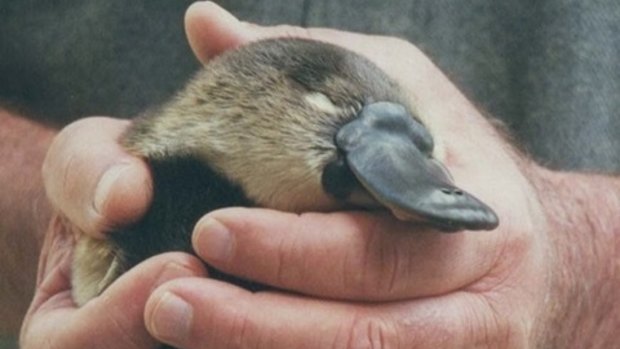
A platypus at Warrawong Sanctuary.
Whenever friends from overseas visit, I drive them through a secret valley near my home in the Blue Mountains, rolling grasslands and eucalypt groves dotted with Eastern Grey kangaroos, waddling echidnas and snuffling wombats.
"Stop the car!" my friends inevitably shout, whipping out their cameras on what is, to them, a safari as thrilling as any in Africa or India.
International visitors are enamoured with our weird and wonderful menagerie, with icons such as the kangaroo and koala a huge drawcard for nature-lovers. Unfortunately, it's taken a crisis as immense as the recent bushfires for many Australians to gain similar appreciation of the unique creatures that inhabit our own backyard, particularly in light of the shocking losses that occurred during the infernos.
The figures are near incomprehensible. A potential 1.25 billion Australian native animals lost – not counting invertebrates, insects and pollinators that are crucial to the regeneration of forest habitat. An estimated 8000 koalas may have perished in NSW alone; while Kangaroo Island may have lost up to 50 per cent of its koala colony.
There's even speculation that some species, including Kangaroo Island's tiny dunnart, may have been pushed beyond the brink, adding to Australia's already appalling record of the highest extinction rate of mammals in the past 200 years.
But from the ashes, a phoenix is rising – one of renewed urgency, a determination to save our unique natural heritage and fight for the preservation of endangered species.
"The fires have made more people aware of the vulnerability of our wildlife," says Dr Phoebe Meagher, wildlife conservation officer at NSW's Taronga Conservation Society. "Unfortunately a lot of conservation actions in the past have been reactive too-little-too-late scenarios. But if we act now, if we start putting recovery programs in place, we can probably bring [threatened species] back to their original levels."
Leading those rehabilitation and research projects, as well as caring for animals injured in the fires, are major zoos such as Taronga and Zoos Victoria as well as countless not-for-profit sanctuaries, many staffed by dedicated volunteers. While some quietly do their crucial rescue work in private, others are open to the public and allow visitors to engage with native animals in their care.
"Zoos and sanctuaries are vital for Australian wildlife, not just for the direct impact they have on conservation, but also because they show a window on wildlife to the rest of us living in the cities," says Dr Andrew Tribe, wildlife manager for Hidden Vale Wildlife Centre – part of the upscale Spicers Hidden Vale rural resort – in Queensland.
"Education is vital, as well as trying to find ways we can actually make things better for our wildlife and enhance their populations in the wild. Then we won't be talking about extinction crises – instead, we'll be saying we've got stable, sustainable populations in the wild because we've taken the steps to reduce the threat."
Here is Traveller's choice of the best Australian native wildlife experiences. In visiting them you'll not only be supporting Australia's unique wildlife but also the nation's beleaguered tourism industry and the communities of which they are part.
THE PLACE
The Koala Hospital, Port Macquarie, NSW
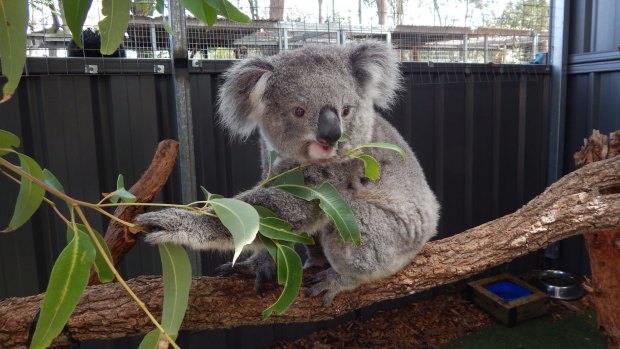
THE EXPERIENCE
Koalas have become the tragic poster-child of the recent bushfires, with their desperate plight breaking hearts and opening wallets around the world as we learnt just how vulnerable this lovable species is. After setting up a Go Fund Me page with a humble goal of $25,000, the Koala Hospital raised an incredible $7.5 million, which will be used to start a wild breeding program as well as to continue its work rescuing, rehabilitating and releasing koalas back into the wild. Free guided tours of the facility are now so popular they've been attracting as many as 200 visitors daily.
THE WILDLIFE
Since the bushfires first hit Port Macquarie in October, around 70 koalas have been brought into care, a 75 per cent increase in patient numbers. While koalas preparing to be released back into the wild are shielded from public view, visitors can admire permanent residents such as always-hungry Barrington Xavier and petite Lismore Rose.
DON'T MISS
Adopting one of the permanent residents or a recently released joey is a feel-good gift for animal-loving friends and family, with an e-adoption certificate costing $40 a year.
ESSENTIALS
The Koala Hospital is open daily, 8am-4.30pm, with volunteer-led tours at 3pm. Entry is free with donations welcome. See koalahospital.org.au; visitnsw.com; portmacquarieinfo.com.au
THE PLACE
Healesville Sanctuary, Healesville, Victoria
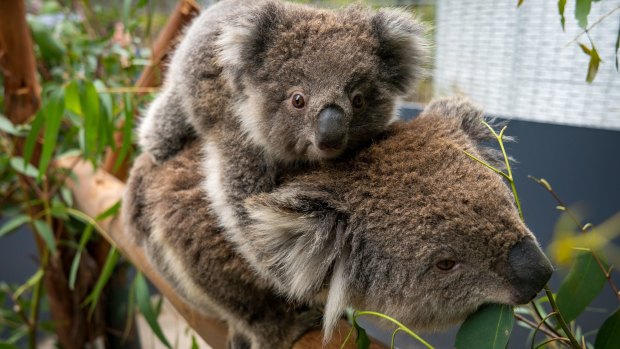
Tippy and Jellybean at Healesville Sanctuary.
THE EXPERIENCE
Healesville Sanctuary was on the frontline of the bushfire crisis, sending veterinary staff to triage centres in Mallacoota, Bairnsdale and Corryong. There are currently eight recovering koalas in care at the sanctuary's Australian Wildlife Health Centre, a wildlife hospital that treats more than 1500 injured animals a year. Visitors are welcome to wander through the facility, meet the vets and nurses and learn about their conservation and rehabilitation work.
THE WILDLIFE
The sanctuary is divided into several habitats including a woodland track, a wetlands track, a koala forest, a platypus track and a dingo enclosure.
DON'T MISS
The Spirits of the Sky bird of prey performance showcases the aerial mastery of magnificent raptors including wedge-tailed eagles, black-breasted buzzards and several parrots.
ESSENTIALS
Healesville Sanctuary is open daily, adults $38, children 4-15, $19 (free on weekends or holidays). To donate to Zoos Victoria bushfire relief fund see zoo.org.au; visitvictoria.com
THE PLACE
Taronga Zoo, Sydney
THE EXPERIENCE
Taronga's Wildlife Retreat offers the opportunity to sleepover with Aussie animals while supporting the Taronga Conservation Society, the research and wildlife recovery arm of the zoo. Guests have exclusive access to The Sanctuary, home to an array of native wildlife including echidnas, bettongs, pademelons and koalas, with keeper-led tours as well as free time to mingle with pouched inhabitants.
THE WILDLIFE
After the fires, the zoo was inundated with patients and is caring for 12 koalas, seven platypus, rescued from drought-stricken rivers, and several wallabies. The aim is to re-release these animals once they and their habitats have recovered.
DON'T MISS
At the Taronga Institute of Science and Learning, it's the scientists who are on display, with public access to the genetics lab, an enrichment development centre and health and behavioural ecology labs.
ESSENTIALS
The Wildlife Retreat costs from $790 a night for two adults and includes two-course dinner, buffet breakfast, exclusive Australian animal experiences and general admission. See taronga.org.au; visitnsw.com
THE PLACE
Devils@Cradle, Cradle Mountain, Tasmania
THE EXPERIENCE
Devils@Cradle is a privately-owned captive breeding facility and sanctuary for the three largest members of the carnivorous marsupial family in Tasmania: Tasmanian Devils, Spotted Tail Quolls and Eastern Quolls. All three species are either threatened or endangered in the wild and the aim is to cotribute to the ongoing survival of these animals.
THE WILDLIFE
There are more than 120 native carnivores at the facility, as well as orphaned and injured animals, including two Bare-Nosed Wombat joeys, that it plans to release back into the wild.
DON'T MISS
The Joey Encounter is a small group behind-the-scenes look at young animals in the facility, with guides educating guests about how the marsupials develop and how orphaned and injured wildlife is cared for.
ESSENTIALS
Devils@Cradle is open daily from 9.30am-5pm, entry $20 adults, $12 children. All entry costs and "adoptions" go back to conservation programs and running costs of the park. See devilsatcradle.com; discovertasmania.com.au
THE PLACE
Kangaroo Island Wildlife Park, Duncan, South Australia
THE EXPERIENCE
With Kangaroo Island severely impacted by fires, Kangaroo Island Wildlife Park has been inundated with injured native species. After a successful fundraiser, staff have been treating the wildlife and building extra enclosures. Meanwhile, the public can visit the park's 600 resident animals, with activities including animal presentations and up-close photo opportunities.
THE WILDLIFE
As well as koalas, the park has a large collection of kangaroos and wallabies, dingoes, echidnas and dozens of species of birds including penguins, cassowaries and local parrots.
DON'T MISS
Private tours allow guests to get even closer to the animals, including the opportunity to hold koalas and wombats and bottle-feed joeys.
ESSENTIALS
Open daily from 9am to 5pm, entry $28 adults, $16 children; animal encounters extra. A private tour costs $300 adults, $200 children. The park's fundraiser has raised more than $2 million, which is helping with veterinary costs as well as building a new orphaned joey hospital. To donate, visit gofundme.com See kangarooislandwildlifepark.com; southaustralia.com
THE PLACE
Spicers Hidden Vale, Grandchester, Queensland
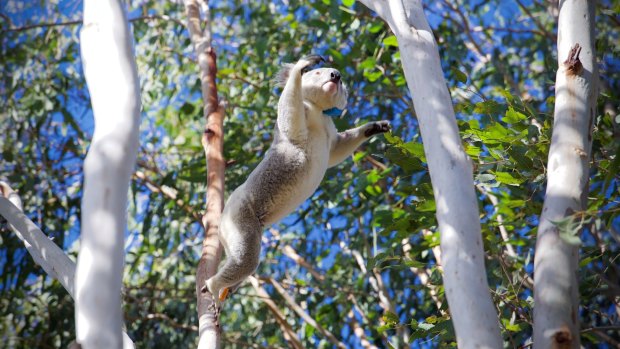
THE EXPERIENCE
Located on 4000 hectares in the scenic Lockyer Valley, Spicers Hidden Vale is a luxury retreat that offers immersion in the Australian bush. A koala safari led by Dr Andrew Tribe from Hidden Vale Wildlife Centre is not only a great way to see koalas in their natural habitat, but its "citizen science" approach assists researchers as they check on the health of the resident koala community.
THE WILDLIFE
The 26 koalas living in Hidden Vale's eucalyptus forests are monitored by the Wildlife Centre with electronic tags recording their movements and behaviours.
DON'T MISS
Spicers Hidden Vale guests can tour the Hidden Vale Wildlife Centre for just $10 a person. They can go behind the scenes of the research facility and get up close to the animals being cared for before release.
ESSENTIALS
Spicers Hidden Vale's Koala Safari runs on Tuesdays and Fridays from 2.30pm and costs $129 a person, with 75 per cent of proceeds donated to the Hidden Vale Wildlife Centre. See spicersretreats.com; queensland.com
THE PLACE
Alice Springs Desert Park, Alice Springs, Northern Territory
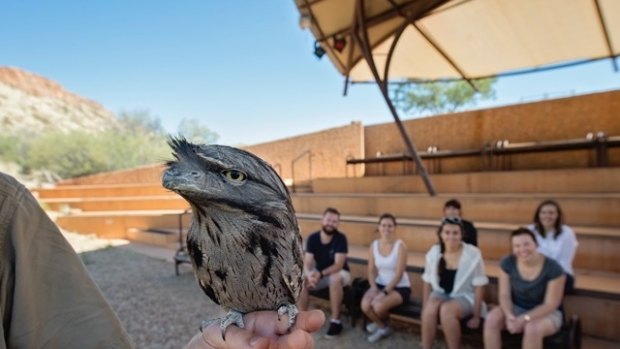
Credit: Tourism NT/Shaana McNaught
THE EXPERIENCE
Part zoo, part botanical garden and part nature reserve with breathtaking views, Alice Springs Desert Park is themed around communities and connections – animals, plants and desert peoples. Engaging storytelling helps explain the complexities and secrets of Australian deserts.
THE WILDLIFE
ASDP showcases iconic desert creatures including wedge-tailed eagles, bilbies, dingoes, red kangaroos and thorny devils. The park also hosts many animals rescued after being injured or orphaned, and who are now "ambassadors" for their species and habitats.
DON'T MISS
Every day the park's keepers allow the birds to show off their natural behaviours during a world-class display of free-flying birds.
ESSENTIALS
Alice Springs Desert Park is open daily from 7.30am to 6pm, with entry $37 adults and children $18.50 (5-16). See alicespringsdesertpark.com.au; northernterritory.com
THE PLACE
Walkabout Park, Calga, NSW
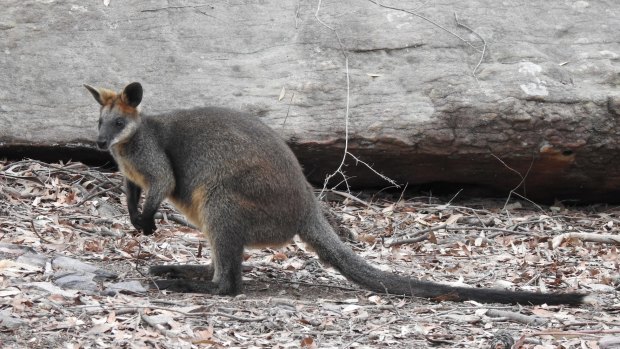
THE EXPERIENCE
NSW's only heritage-listed wildlife sanctuary, 50 minutes north of Sydney, protects the ancient Aboriginal cultural landscape as well as taking in rescued wildlife and breeding endangered animals for release back into the wild. Set in 72 hectares of natural habitat, expect to be accompanied by inquisitive but gentle kangaroos as you explore the tracks.
THE WILDLIFE
The sanctuary is home to koalas, wombats, cockatoos, flying foxes, dingoes, Tasmanian devils, bilbies, quolls, free-ranging kangaroos, emus and all the wild creatures that live in the bush. It evacuated 300 animals away from fires in December and after five weeks, the fire burned out just five kilometres from its fenceline.
DON'T MISS
Boomerang throwing, bush tucker workshops, Aboriginal sites walkabout and animal encounters every half an hour. Or stay overnight in a cabin, take a sunset walk and enjoy the Australian bush as it comes alive after dark.
ESSENTIALS
The sanctuary is fully funded by visitor fees and donations. Open daily, $28 adults, $16 3-16 including half-hourly ranger-led activities. See walkaboutpark.com.au; visitnsw.com
THE PLACE
Billabong Zoo, Port Macquarie, NSW
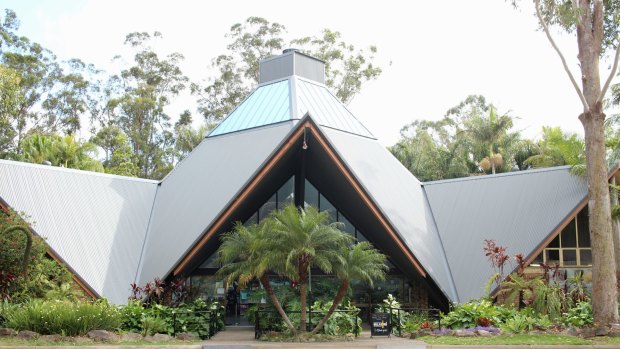
THE EXPERIENCE
Billabong Zoo Koala & Wildlife Park has had a successful captive koala breeding program since 1995 with the aim of improving koala genetics. Its goal is to set up a release program so koalas bred in captivity can live in a safe, sustainable location. Young visitors will love the animal encounters which include patting koalas, feeding kangaroos and being draped with a curious carpet python.
THE WILDLIFE
Billabong exhibits more than 80 native and exotic animals, with an emphasis on Australian mammals, birds and reptiles. It has three beautiful purebred dingos, a macropod meadow where 'roos and emus wander, and an awesome underground glass-walled "mine" to view tunnelling wombats.
DON'T MISS
Billabong's keepers are passionate and well-informed and half-hourly presentations are an essential part of the zoo's educational focus.
ESSENTIALS
Entry includes free keeper talks and animal meet-and-greets; $34 adults, $19 children 3-15. One-on-one animal encounters are extra. See billabongzoo.com.au; visitnsw.com
THE PLACE
Warrawong Wildlife Sanctuary, Mylor, South Australia
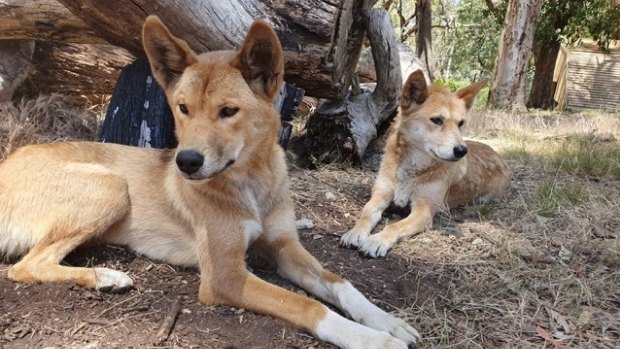
. Credit: Kat Lindsay
THE EXPERIENCE
The Sanctuary's 11 hectares, protected by feral-proof fence, includes wetlands, scrub, grasslands and forest habitats. Guests can walk through this open system at leisure, spotting native animals and plant life. By visiting the sanctuary, guests also support ongoing conservation work including the self-funded koala insurance population, the protection of the last wild platypus on mainland South Australia and the development of a wildlife hospital to assist with fire-affected wildlife.
THE WILDLIFE
Free-roaming animals include kangaroos and wallabies, emus, koalas, turtles and wetlands birds. There is a large enclosure for two rehomed dingoes, while a range of animal encounters include a koala "pat and chat" and a bird of prey show.
DON'T MISS
Dawn and dusk tours are a highlight, as Australian animals are mostly active at twilight. It's also a great way to learn about the sanctuary's history, including its years of abandonment and the restoration work underway.
ESSENTIALS
The sanctuary is open to the public on weekends, $12 adults, $8 children 3-15; private bookings are accepted weekdays. Donations to support the conservation can be made through the Warrawong Foundation. See warrawongws.com.au
THE WILD-LIFE ONES
DR PHOEBE MEAGHER, TARONGA ZOO, NSW
"They used to say the public's view of a zoo was the tip of the iceberg, with all the other work they were doing underneath the water level. Now that's becoming more and more visible. At the Taronga Institute of Science and Learning we have 100,000 students come through every year to see scientists working, so it's such a great way to inspire and encourage the next generation about conservation."
DR ANDREW TRIBE, HIDDEN VALE WILDLIFE CENTRE, QLD
"Will the bushfire relief be a flash-in-the-pan where people rally around and dig deep to help our wildlife, or will it have a long-term effect, where they say something's got to change and how can we improve the situation for wildlife and make sure this doesn't happen again? We can't avoid fires and drought completely, but we can at least be a little more prepared."
RENATE JOHNNY, ALICE SPRINGS DESERT PARK, NT
"More than 70 per cent of Australia is desert or arid zone, but many people are unaware of how diverse, important and fragile our deserts are. Bringing people face-to-face with the magical creatures that live here is what ASDP does best. Nowhere else in the world can you see a baby bilby safe in the mock-night of a nocturnal house, marvel at thorny devils guzzling ants, then watch a wild flock of green and gold budgerigars wheel and whoosh overhead."
GERRY ROSS, AUSTRALIAN WILDLIFE HEALTH CENTRE, VIC
"We hope that visitors to the Wildlife Health Centre at Healesville will start to understand the impact of what these fires have had on Australian wildlife and what we're doing in that space. It's a great education tool, especially for young visitors who might become the next generation of conservationists."
SUE ASHTON, THE KOALA HOSPITAL, NSW
"It's critically important that all Australians support sanctuaries and wildlife carers. The public can play a huge role in the survival of the species. Simple things, if you live in an area with wild koalas keep your dog locked up at night, drive slowly in koala and other wildlife-populated areas and become members of wildlife groups, visiting or volunteering at sanctuaries."
FIVE ANIMALS YOU WON'T GET TO SEE
TASMANIAN TIGER (THYLACINE)
The haunting image of the last Tasmanian Tiger languishing in Hobart Zoo in 1933 is a sad indictment of Australia's miserable extinction record, with this magnificent marsupial subject to a government bounty for its slaughter.
BRAMBLE CAY MELOMYS
This small brown rat that lived on a tiny island on the Great Barrier Reef is said to be the world's first mammal to become extinct due to "human-induced climate change".
DESERT-RAT KANGAROO
Once endemic to Central Australia, this delicate hopping marsupial disappeared after being "discovered' in the 1840s, reappearing in 1931. It was declared extinct in 1991, the only mammal species to be recovered and then lost again.
CHRISTMAS ISLAND PIPISTRELLE
A tiny bat found only on Christmas Island, this is one of three species lost in the last decade, officially declared extinct in 2012.
CHRISTMAS ISLAND FOREST SKINK
Gump, the last-known of her species, died on 31 May 2104 after an unsuccessful search for a mate.
FIVE PLACES TO SEE AUSTRALIAN WILDLIFE IN THE WILD
DEPOT BEACH, SOUTH COAST, NSW
The 'roos that graze on grassy verges in Murramarang National Park are relatively tame – but be cautious, they are still wild creatures and have been known to kick and scratch.
RAYMOND ISLAND, VIC
Look up as you walk or cycle along the island's 1.2 kilometre Koala Trail, with koalas frequently spotted dozing in branches of suburban backyard trees.
KOOLOONBUNG CREEK RESERVE, PORT MACQUARIE, NSW
This reserve is home to the largest flying fox population in the region, with up to 100,000 sleeping in the trees during the day and blackening the evening sky as they set off foraging for fruit.
PHILLIP ISLAND, VIC
As well as boasting a koala reserve sheltering dozens of cuddly koalas, Philip Island is famed for its nightly Penguin Parade, as dozens of little penguins return ashore after a day's fishing.
JENOLAN CAVES, NSW
The Blue Lake at Jenolan Caves is home to several gregarious platypuses, who rise to the surface and seemingly play up to the gathered crowd.
Sign up for the Traveller Deals newsletter
Get exclusive travel deals delivered straight to your inbox. Sign up now.